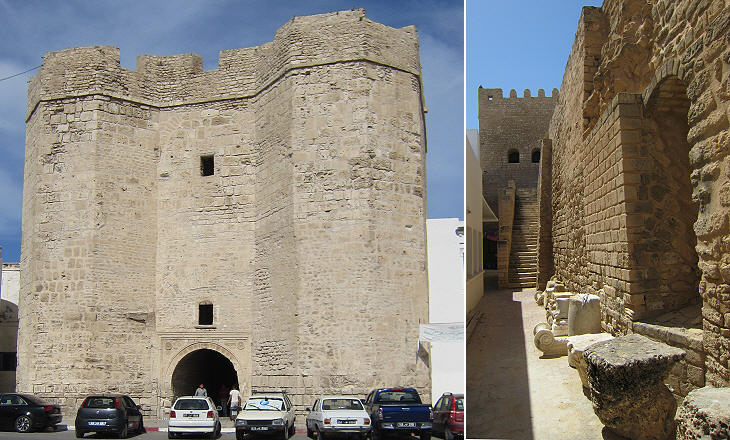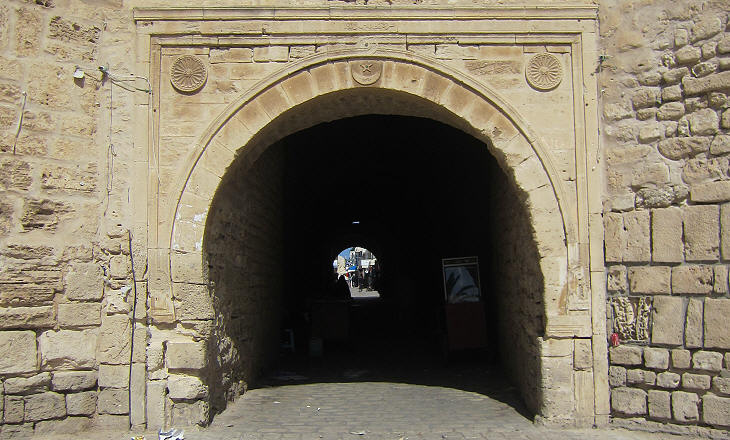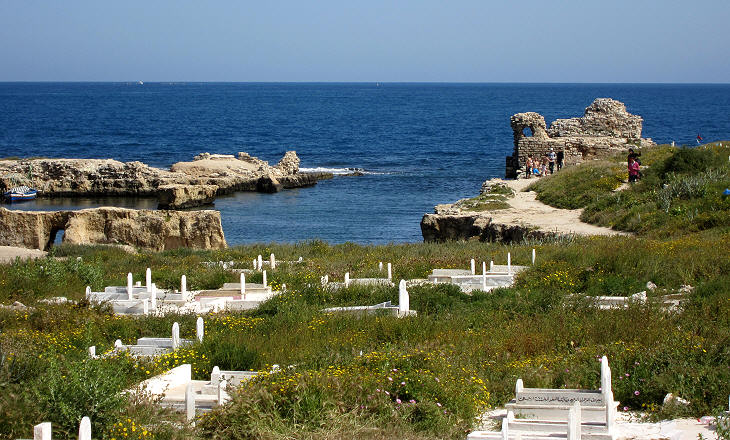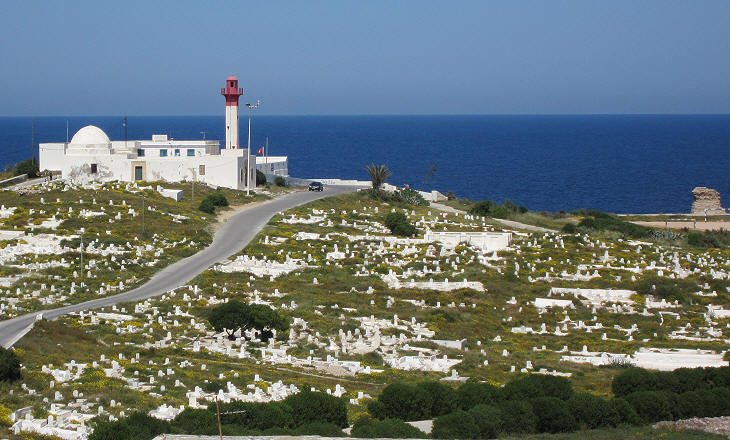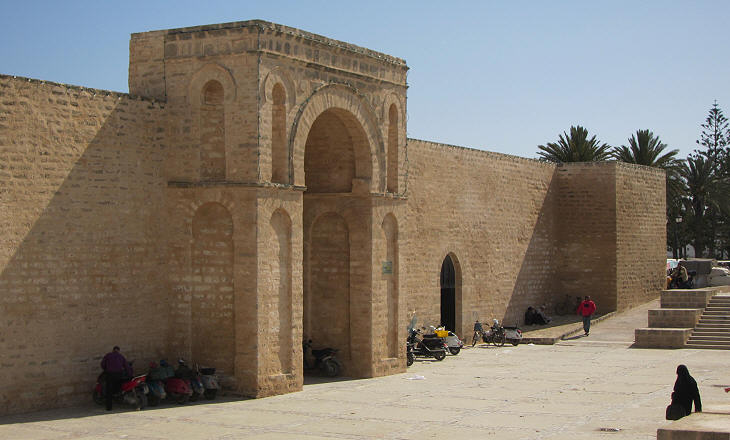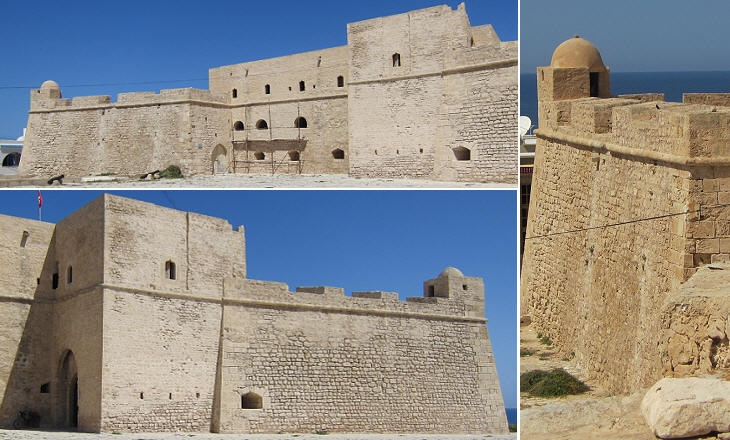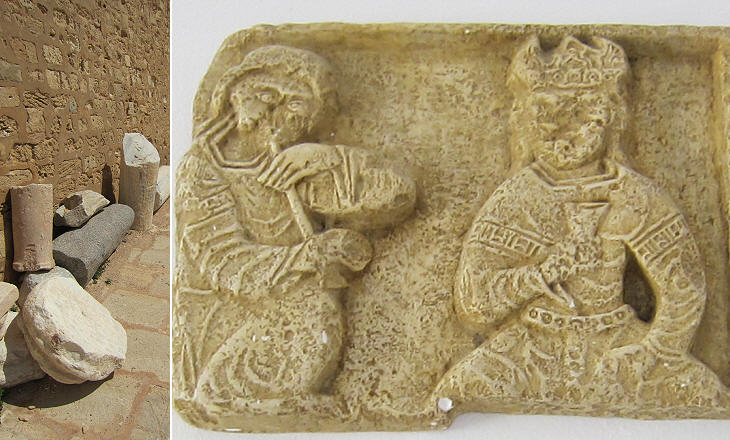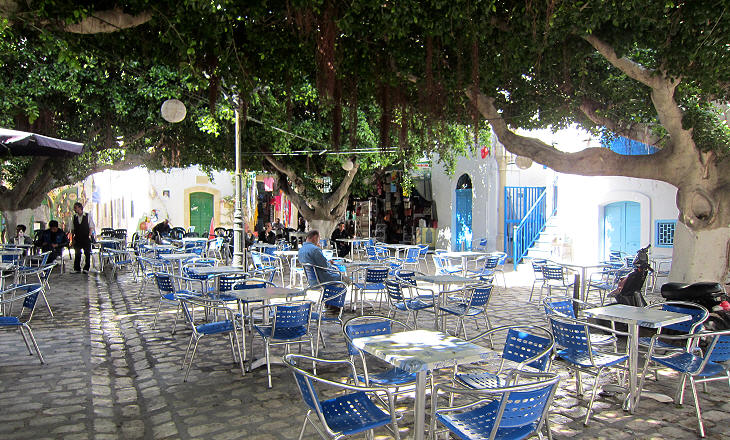  What's New! Detailed Sitemap All images © by Roberto Piperno, owner of the domain. Write to romapip@quipo.it. Text edited by Rosamie Moore. Page added in December 2012. |
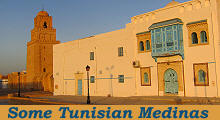 - Mahdia - Mahdia(the Great Minaret at Kairouan) This place is interesting to Englishmen as being the scene of the very first expedition against North Africa in which we took a part. It is thus described by Froissart and Holinshed: "In the thirteenth year of the reign of Richard II (1390) the Christians took in hand a journey against the Saracens of Barbary, through the suit of the Genoese, so that there went a great number of lords, knights, and gentlemen of France and England, the Duke of Bourbon being their general. Out of England there went John de Beaufort, bastard son to the Duke of Lancaster, also Sir John Russell, Sir John Butler, Sir John Harcourt, and others. They set forward in the latter end of the thirteenth year of the king's reign and came to Genoa, where they remained not very long, but that the galleys and other vessels of the Genoese were ready to pass them over into Barbary, and so about midsummer in the beginning of the fourteenth year of the king's reign, the whole army being embarked, sailed forth to the coast of Barbary, where, near to the city of Africa, they landed, at which instant the English archers stood all the company in good stead, with their long bows, beating back the enemy from the shore, which came down to resist their landing. After they had got to land they environed the city of Africa, called by the Moors Mehedia, with a strong siege, but at length, constrained by the intemperance of the scalding air in that hot country, breeding in the army sundry diseases, they fell to a composition on certain articles to be performed in behalf of the Saracens, and so, sixty-one days after their arrival, they returned home." From 1895 Murray handbook for travellers in Tunisia and Algeria.
In the past, geographers called a short rocky promontory in Central Tunisia Cape Africa. In 916 Ubaid Allah al-Mahdi (the Chosen One) founded the capital of what eventually became the Fatimid Caliphate on the site of a previous Phoenician minor port at the tip of the promontory. The town was called al Mahidiya, but in Europe it was known as Africa. When the Arabs founded their first capital in Tunisia (Kairouan) they chose an inland location as they feared attacks by the Byzantine fleet. The foundation of Mahdia shows that having conquered Malta and Sicily the Arabs did not fear attacks from the sea any longer, but they were rather concerned about rebellions by the inland Berber tribes who had not completely accepted Arab supremacy. The narrow isthmus leading to the promontory was strongly fortified.
The port of Mahdia was one of the bases from which Arab ships sailed to raid the coasts of Italy and to assault the convoys of the maritime republics. In 1087 Genoa and Pisa reacted and attacked and destroyed the fleet in the harbour of Mahdia putting an end to Arab supremacy on the western Mediteranean Sea. Similar to Sousse, Monastir and Sfax, Mahdia was conquered by the Normans in 1148, but their attempt to found a Christian kingdom on the coast of Tunisia failed in 1160. In 1390 Genoa called a crusade against the pirates of Mahdia in which French and English knights took part and which is described at the beginning of the page.
Today it is difficult to believe that the threat to the Christian maritime routes originated from this small harbour cut by the Phoenicians into the rocks of the promontory (you may wish to see the ports of Carthage). The Arabs protected the access to it by two towers and by a chain between them, which however was broken in 1087 allowing the assailants to set the Arab fleet on fire and seize the town.
Starting from 1535 Emperor Charles V was involved in supporting a local dynasty against Hayruddin Barbarossa and other corsairs who in turn were supported by the Ottoman Empire. European engravings depicting the siege (and seizure) of Mahdia in 1550 by the Spaniards show that the whole promontory was surrounded by walls and that the area near Cape Africa was populated. That siege and the following one in 1554 at the end of which the Spaniards abandoned Mahdia caused the decline of the town. The remaining inhabitants settled in the area of the isthmus and the tip of Cape Africa became the site of a large cemetery.
The Kings of Spain had the title of Rex Catholicus and their allegiance to the Catholic Faith made them unable to deal with their Muslim (and Protestant) subjects and to firmly establish their rule over the many towns of Tunisia that their warships and their armies conquered. At Mahdia the Xth century Great Mosque was turned into a church and its courtyard into a Christian graveyard. When eventually the Spaniards were forced out of Mahdia they destroyed it together with other important historical buildings. In the 1960s the mosque was rebuilt, but only the great portal and the towers flanking the façade are in part original.
In the late XVIth century the Ottomans built a fortress at the eastern end of the reduced populated area of Mahdia. In the XVIIIth century it was strengthened by additional bastions in fear of attacks by European fleets as retaliation for the piratical activities which continued to be launched from Tunisian ports. The image used as background for this page shows an old gun at Borj el-Kebir.
In 1885 the population of Mahdia amounted to 8,500 and the Murray handbook had celebrative words. This place has risen from its ruins in a remarkable manner since the French occupation; the old and dilapidated ramparts have been pulled down, and their material used for the breakwater of the harbour. Only Skifa el-Kahla and a short section of the adjoining walls were spared.
The 1895 handbook added: The Arab quarter, on the N. of the promontory, remains untouched. Today this is only partly true as the touristic development of the coast adjoining the promontory has made the old town a venue for shopping, especially in the area near Skifa el-Kahla. One must walk towards the tip of the promontory to find some more evocative spots.
Move to: Introductory Page Bizerte Kairouan Monastir Sfax Sousse Tunis and An Excursion to La Goulette and Sidi Bou-Said  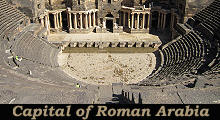 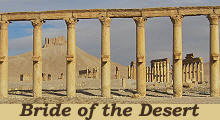 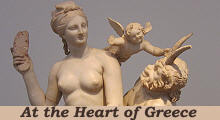 |
